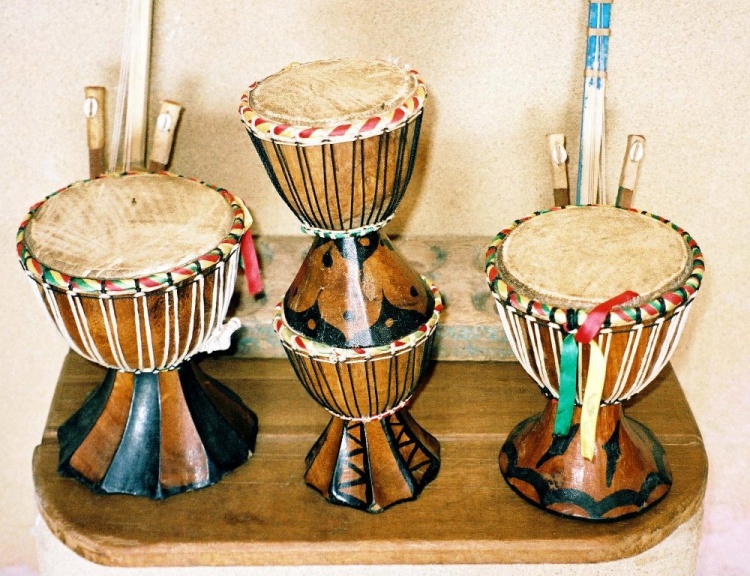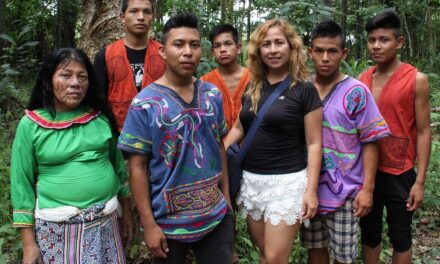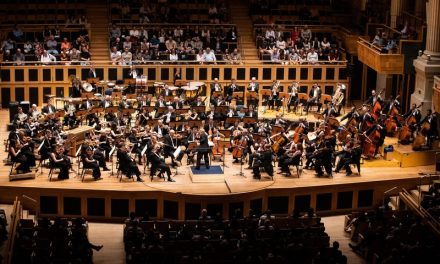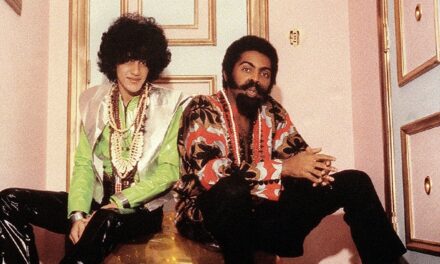By Willy Rubén Paffen
 Like jazz, the blues and part of the Brazilian music, popular Cuban music oscillates between sacred Yoruba, Congo and Abakwa chants and guarachas. The authentic Rumba, a complex and gripping ritual including drumming, singing, declamation and dancing was born through a long process of the African influences in the island.
Like jazz, the blues and part of the Brazilian music, popular Cuban music oscillates between sacred Yoruba, Congo and Abakwa chants and guarachas. The authentic Rumba, a complex and gripping ritual including drumming, singing, declamation and dancing was born through a long process of the African influences in the island.
Four main ethnic groups composed the great majority of the African Diaspora arriving in Cuba: the Yoruba from West Nigeria and Togo, the Carabalí from South Nigeria and Cameroon, the Bantú from Congo and Angola, and the Ararás from Benin. Almost same as in Brazil (especially in Salvador, Bahia), from these groups resulted in a predominance of the Yoruba and the development of Santería, the best known and most common expression of African mysticism in Cuba. But in the past decade the rumba has taken a prideful place on center stage, having grown more respected and visible than at any time in its history.
Consecrated drums, the set of three hourglass-shaped batá, are exclusively used in ceremonies to invoke Orishas (Yoruba tradition). Specifically built to empirical yet rigorous specifications, preferably from whole pieces of cedar drilled by hand, these drums keep the African tonal order where the bass drum, called iyá or mother, is the soloist; the medium drum, called itótele or father, follows the lead; and the acute drum, called okónkolo or child, performs a somewhat recurring pattern.
Every batá drum has two goatskin membranes of different diameters, is stricken by hand on each end in an alternative manner, and is typically played while seated with drums resting horizontally over player’s keens while secured with a belt. The batá drums have a relation with the Lucumí (ceremonial Yoruba dialect used in Cuba), as striking the drums relates to the tonalities of the language: the drums speak.
The importance of dance in the African religions brought over to the Americas can’t be over-stressed. Their religious ceremonies invariably involve music performed with percussion instruments striking patterns that correspond to precise dance steps, that is, the music is performed to interact with the dancers’ movements.
Secular dances developed as well, increasing with the translation from rural into peripheral areas of cities, from enslaved laborers to free citizens on the margins of society. The well known Zapateo, Habanera, Contradanza and Danzón dance styles, while not without African influence, derived mainly from European forms.
Among those with strongest African components are: the Yuka, an erotic dance from Congo mimicking courtship between rooster and hen; the Quimbumbía, a dance-game from Congo involving two small canes; the Maní, a boxing dance from Angola closely related to the Brazilian Capoeira; the Palo, originating from Congo and suggestive agricultural labors; the Tumbandera, a peasant dance performed with one foot buried on the soil and one rope tied both to a drum and to a tree; the Caringa a line dance where changes in the music were signaled with dancers tight-slapping movements; and the “Rumba”, a folkloric music and dance tradition originating from the ports of Cuba.
 The Rumba uses improvised percussion instruments, songs of call by a soloist and response by a choir, improvised texts relating to daily conflicts, and specific choreographic routines according to actual style being performed. Rumba tradition evolved until it acquired the percussion instruments that now characterize it: conga (quinto, tres-golpes and salidor), palitos, caja and shekeré.
The Rumba uses improvised percussion instruments, songs of call by a soloist and response by a choir, improvised texts relating to daily conflicts, and specific choreographic routines according to actual style being performed. Rumba tradition evolved until it acquired the percussion instruments that now characterize it: conga (quinto, tres-golpes and salidor), palitos, caja and shekeré.
Excluding seldom practiced or extinct forms such as Española, Jiribilla, Palatino, Tahona, Tonada, Reseda, Mamábuela, and Mandunga, nowadays Rumba has three traditional styles that are still performed: Yambú, Columbia and Guaguancó. The Yambú is a Rumba where the dancer moves like old people, with slow movements that include mimicking household chores by women and feats such as picking a handkerchief from the floor with the mount by men. Columbia is a direct descendant of the Carabalí’s secret male-only societies of the XIX century and involves knifes, lances and swords. It’s usually danced by an acrobatic solo dancer according to short percussive phrases and in counterpoint with the quinto (lead conga drum).
Guaguancó is the type of rumba that has reached most international renown, being basis of most of Latin jazz and salsa music. It is distinguished by the “vacunado”, an aggressive dance in which the man chases the woman to posses her symbolically (to inject her) with convulsive pelvic movements. The woman pretends indifference, coquettishly evades the man, blocks his approaches and recoils from his advances protecting her body with seductive gestures. The woman rejects, attracts, evades and retains; the man attacks, surrounds, half-closes and “injects.”
An excellent example of the living tradition of Rumba as is performed in Cuba today is the Muñequitos de Matanzas. A close-knit family ensemble that has passed its music on to its children and grandchildren, the group has giving the work a soul and authenticity that has helped the music transcend its narrow cultural origins.
 The word rumba evokes a mood, an atmosphere of noise and celebration. “Go to the Rumba” means to go dance and celebrate life. The sensuous “Mulata de la Rumba” a rumba dancer and singer, is a fun-loving creature and one of the major Cuban archetypes. A group of “amigos”, a bottle of rum and a few instruments, and a rumba springs up anywhere, like the samba or batucada in Rio. Unlike much Latin music, which is perhaps too sweet for American tastes, rumba is hard. It’s like rock. It deals with the tough aspects of existence.
The word rumba evokes a mood, an atmosphere of noise and celebration. “Go to the Rumba” means to go dance and celebrate life. The sensuous “Mulata de la Rumba” a rumba dancer and singer, is a fun-loving creature and one of the major Cuban archetypes. A group of “amigos”, a bottle of rum and a few instruments, and a rumba springs up anywhere, like the samba or batucada in Rio. Unlike much Latin music, which is perhaps too sweet for American tastes, rumba is hard. It’s like rock. It deals with the tough aspects of existence.














